On the last post, I outlined the history and the main challenges to achieving level boarding on London’s legacy railway systems. And so, the next few posts will look at solutions that are being considered in order to increase the provision of level boarding. Due to the nature of these solutions, cases outside of London will be examined to provide comparison. Unfortunately, the post will also highlight the reasons why level boarding will continue to be a very slow work in progress unless there is a strong push from passengers and lawmakers to demand equal access for all instead of “turn up and hope.”
As both the DLR and Tramlink have full level boarding due to their relatively recent construction, they will be excluded from this discussion. Furthermore, the Underground will be singled out from the remaining railway services (including Overground, TfL Rail/Elizabeth Line, and National Rail services) due to its very high degree of segregated services and already uniform rolling stock per line. This post will thus focus on these “mainline” services, as there has been a lot of recent news and developments that will kickstart an increase in level boarding at different areas in the country.
As of right now, the only places on London’s mainline railway network that offer level boarding at step-free stations are parts of the Overground’s East London Line core, the Thameslink core, and the Heathrow stations. When it opens this December, the Elizabeth Line between Paddington and Abbey Wood will also join this list, allowing level boarding throughout the whole platform. In these cases, the rolling stock is modern and has been largely standardised, allowing for a consistent Platform-Train Interface (PTI) to be created.
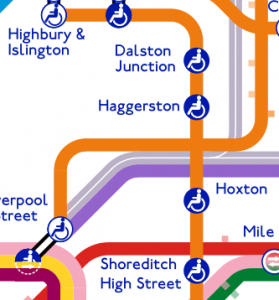 Streak of full step-free access on the Overground. Notice the lack of level boarding at Highbury & Islington
Streak of full step-free access on the Overground. Notice the lack of level boarding at Highbury & Islington
Even then, major stations such as Farringdon and Highbury & Islington have yet to install platform humps, although this may be due to ongoing Crossrail work at Farringdon and a proposed step-free access improvement at Highbury & Islington. Additionally, the platform humps at some Thameslink stations, particularly London Bridge, have been criticised as leaving a notable gap and slight step that makes it challenging for those that have wheelchairs with smaller wheels.
Outside these sections, the main conditions for level boarding quickly deteriorate: railway lines see a variety of different-sized rolling stock and trains themselves have components, such as internal steps, that inhibit level boarding.
And so, it appears that it is the rolling stock itself, rather than the platform heights, that most strongly impacts the feasibility of level boarding at present time. Quite simply, no railway services except for some lines on the Overground and Thameslink have a uniform fleet of modern trains. For example, suburban routes on South Western Railway currently use up to 6 different classes of trains (Class 444, 450, 455, 456, 458, 707), which include anything between newly-built to 30-year-old trains.
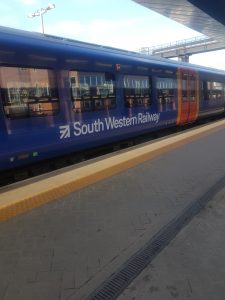 Class 450 train at Reading
Class 450 train at Reading
The reason why a country-wide standardisation of all rolling stock is impractical in the short-term is because there are many relatively recent trains, such as the 15-year-old Class 377’s that are ubiquitous on Southern, that have internal steps and have no chance of being replaced for at least another 15 years. Also, even brand new trains like Great Western Railway’s Intercity Express Trains have an especially high train floor and prominent internal step.
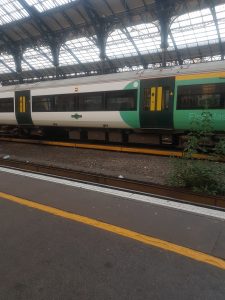 Class 377 train at Brighton, currently one of the most common electric trains in the country
Class 377 train at Brighton, currently one of the most common electric trains in the country
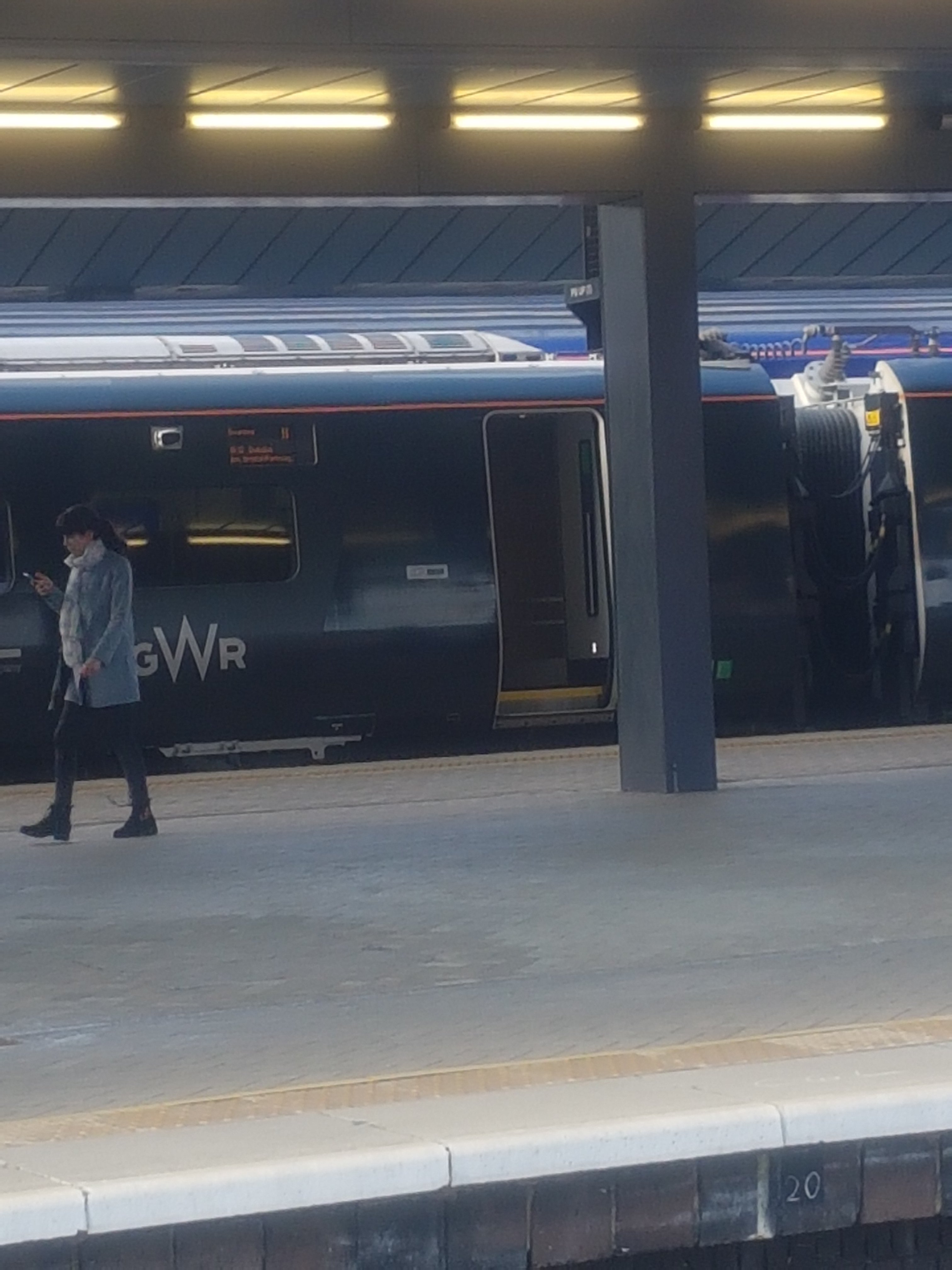 Intercity Express Train at Reading. Notice the step immediately in front of the narrow door
Intercity Express Train at Reading. Notice the step immediately in front of the narrow door
Instead, the immediate focus should be to move towards first optimising the rolling stock for specific routes, preferably those that are self-contained and are less hindered by freight traffic. Luckily, it just so happens that we are in the midst of a train craze, with many train operators in the process of acquiring new trains in hopes of achieving a more uniform rolling stock, following Thameslink’s example. The services receiving a full rolling stock overhaul are those run by Greater Anglia, Great Northern, South Western Railway, the Overground, and TfL Rail/Elizabeth Line.
Great Northern will get new trains, based on Thameslink’s accessible Class 700 Siemens trains, for its services out of Moorgate, which would have been perfect for implementing level boarding given that the two routes (to Welwyn Garden City and to Stevenage) are largely segregated and have close connections with the Underground. Unfortunately, as stated in earlier posts, Great Northern is abysmal at station step-free access, so the new trains will have virtually no impact on accessibility until that changes.
Aventra Avalanche
The train orders for the remaining 4 operators are very interesting as they will all have trains from the same manufacturer and model for their suburban metro services: Bombardier’s Aventra train. The Aventras, unlike previous Bombardier trains such as the Class 377’s, have completely eliminated any internal step, allowing for the provision of level boarding. Unfortunately, like most other trains in the UK, Aventras will have a train floor height roughly 185 mm above the standard 915 mm platform height.
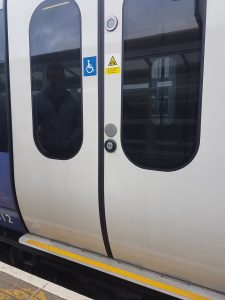
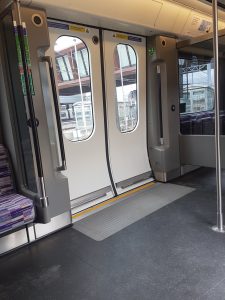 The outside (top) and inside (bottom) of the new Aventra trains on TfL Rail
The outside (top) and inside (bottom) of the new Aventra trains on TfL Rail
Aventras were first introduced on TfL Rail between Liverpool Street and Shenfield almost exactly a year ago in preparation for the launch of the Elizabeth Line, with its order being announced in 2014. Since last month, these have been used on the western TfL Rail routes out of Paddington.
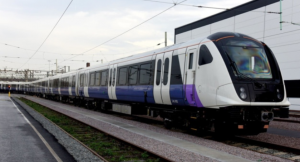 TfL Rail/Elizabeth Line Aventra Class 345 (source)
TfL Rail/Elizabeth Line Aventra Class 345 (source)
In 2015, while these first trains were in production, the London Overground followed suit by ordering its own Aventras to replace the aging trains on its recently-acquired West Anglia lines and Romford to Upminster service, and to provide electric trains for the soon-to-be-electrified GOBLIN. These are meant to be introduced later this year, following delays with testing on the GOBLIN.
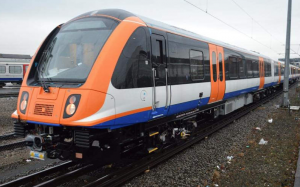 London Overground Aventra Class 710 (source)
London Overground Aventra Class 710 (source)
Then, in 2016, Greater Anglia announced a complete rolling stock replacement programme that called for Aventras to take over its commuter services, which coincidentally run virtually parallel to the Overground’s West Anglia lines and TfL Rail’s eastern branch. What this means is that all suburban services coming out of Liverpool Street will be Aventras, with Greater Anglia’s arriving in 2019.
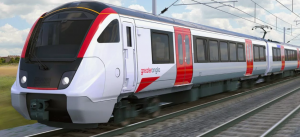 Greater Anglia Aventra Class 720 (source)
Greater Anglia Aventra Class 720 (source)
Rounding out the full rolling stock replacements, South Western Railway caused a bit of an uproar last year when it announced that it was standardising all its suburban routes with Aventras. The reason this was controversial was because the previous franchise had just introduced a small fleet of brand new Thameslink-like trains that would now be displaced within two years in 2019. Personally, I agree with South Western Railway’s decision, as piece-wise replacements are what originally led to its large non-standard metro fleet.
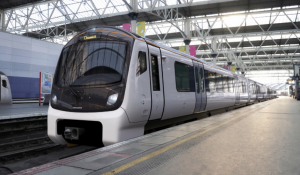 South Western Railway Aventra Class 701 (source)
South Western Railway Aventra Class 701 (source)
This is also significant because when Heathrow’s Southern Railway gets built, there will be a uniform Aventra fleet between the Elizabeth Line and South Western Railway.
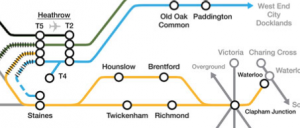 Mixing of the Elizabeth Line (blue) and South Western Railway (yellow) once Heathrow Southern Rail is built
Mixing of the Elizabeth Line (blue) and South Western Railway (yellow) once Heathrow Southern Rail is built
Finally, c2c, which manage largely self-contained routes out of Fenchurch Street, are opting for a partial rolling stock replacement, bringing in a small fleet of Aventras starting in 2021 to cope with rapidly rising passenger levels. With the majority of its current stock approaching 20 years of age, it would not be surprising for the franchise to eventually increase its Aventra order in the coming years.
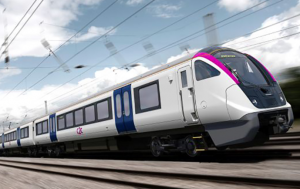 c2c Aventra Class 711 (source)
c2c Aventra Class 711 (source)
And so, by 2021, a large interconnected network of suburban Aventras will be established across London, making the argument for level boarding substantially stronger.
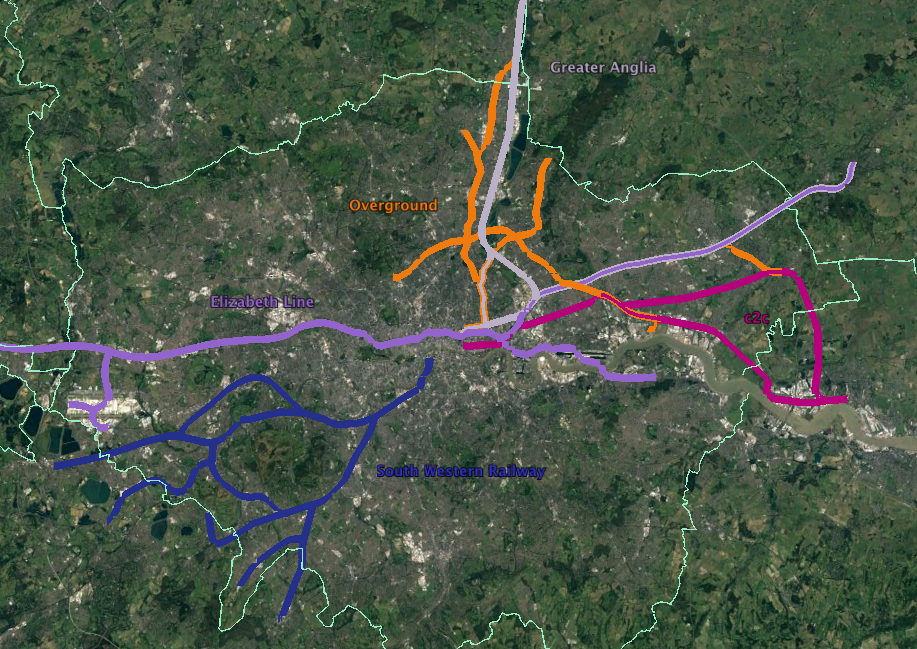 Reach of the Aventra network by 2021
Reach of the Aventra network by 2021
However, it remains to be seen how freight traffic, which plays a large role on c2c routes and the Elizabeth Line branches, will affect the feasibility of installing platform humps without compromising the gap size. Somewhat reassuringly, South Western Railway has a Disabled People’s Protection Policy (DPPP) that expresses their intent to increase the amount of level boarding by the end of the franchise.
 Excerpt from South Western Railway’s DPPP highlighting level boarding
Excerpt from South Western Railway’s DPPP highlighting level boarding
Stadler
Just as we are starting to see signs of train standardisation around certain London corridors, unfortunately centred on high-floor rolling stock, there comes a Swiss manufacturer to throw a spanner in the work: Stadler Rail.
In the UK, trains have a level train floor through the length of each carriage, allowing the whole of the train floor to sit on top of the undercarriage. Stadler uses a design, widely adopted in the continental Europe, where the train floor sinks down around the undercarriage, creating a train floor that varies in height along the carriage’s length. For example, the majority of the train has a low floor, with raised sections where the undercarriage is. This essentially allows for a full-sized train to have a 915 mm train floor height, enabling level boarding without even having to alter the platform’s infrastructure.
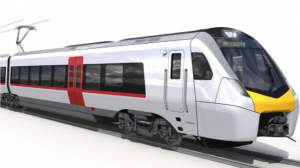 Greater Anglia’s Stadler FLIRT class 745 (source). Notice how the train floor dips below the level of the undercarriage
Greater Anglia’s Stadler FLIRT class 745 (source). Notice how the train floor dips below the level of the undercarriage
So far, three franchises around the country have ordered Stadler trains: Greater Anglia, Merseyrail, and Wales & Borders. In the case of Merseyrail, which is completely segregated from other services, the trains will have a metro design, while Wales & Borders will use a mixture of full-sized and light rail Stadler trains that will cover the entire Cardiff suburban rail network. Greater Anglia, on the other hand, is not planning on using Stadler for its busy London-centred commuter lines, but will instead introduce them on its Intercity service to Norwich, the Stansted Express, and the local services in Norfolk and Suffolk starting in 2019.
In all honesty, it seems absolutely ridiculous to me that this design is not being used for ALL new rolling stock instead of the Aventra design. It is possible that there was a lot of pressure for nearby services to follow the Elizabeth Line and use Aventras. However, Stadler trains may not have even been favoured for these busy routes as the lower train floor results in a narrower train width and the steps above the undercarriage may pose a trip hazard or slow down the boarding process, all of which reduce the train’s capacity. Still, this would have been a transformative development for accessibility in London’s existing network and I predict that once Stadler trains are in service, there will be very strong calls for mandatory level boarding all across the country.
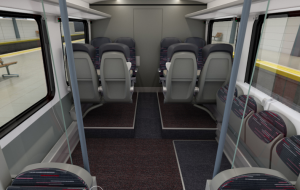 Reduced width and raised sections on Stadler trains (source)
Reduced width and raised sections on Stadler trains (source)
In addition to providing a train height level with the standard platform, Stadler trains also tackle gap issues, with automatic deployment of horizontal ramp from the train at every stop, similar to London buses but without the hassle of alerting the driver. And so, I believe the introduction of these trains will set a new standard for accessibility, hopefully forcing the Aventras to provide a similar level of service through innovative platform hump designs.
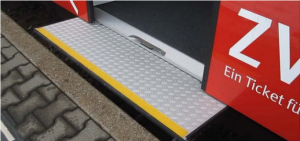 Horizontal automatic ramp on Stadler trains
Horizontal automatic ramp on Stadler trains
For example, ordinary gap fillers can be added to the platform hump to reduce the gap (currently used on Thameslink) or the humps could even be fitted with active platform gap fillers, which would mimic the ramps on Stadler trains. These are some of the options that have been examined by the RSSB to bridge the gaps. Finally, one of the more ambitious research projects, currently in progress, involves looking at the design of “kneeling trains,” which would lean in towards the platform, eliminating both the gap and step. However, seeing as we are at the early stages of introducing two very different types of rolling stock, the aspirations of a kneeling train may be more long-term.
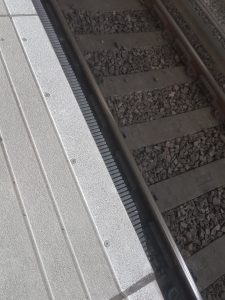 Small gap filler on Blackfriar’s platform hump
Small gap filler on Blackfriar’s platform hump
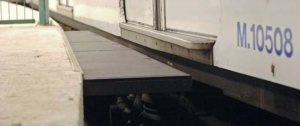 Example of an automated gap filler, outside of the UK
Example of an automated gap filler, outside of the UK
In conclusion, the upcoming Aventras get a bit of a mixed review: while their introduction will result in increased standardisation, they will require significant further investment to modify every platform to allow for level boarding, which is something that the Stadler FLIRT fleet would be able to avoid. Nevertheless, it is up to everyone invested in accessible transport to hold the rail industry to account in order to ensure that level boarding becomes a priority.
I hope this post was useful in detailing the current progress and solutions that will lead to an increase in level boarding on London’s mainline railway network. This is a matter that is very important to me, so expect to see this topic come back as these fleets are introduced.
Stick around for the next post, covering level boarding developments on the Underground!
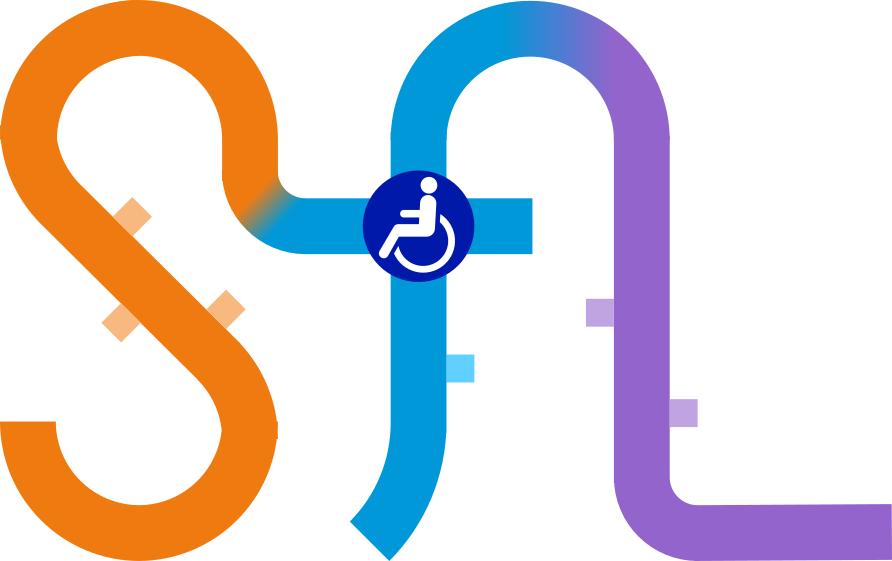
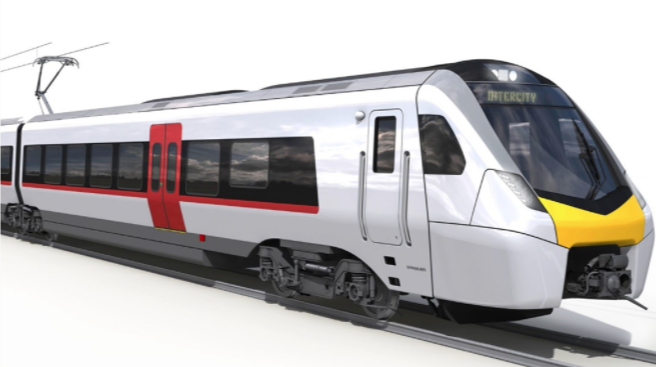
2 comments